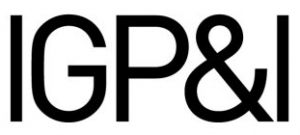On 9 April 2025, the UK Supreme Court handed down judgment in the case of the MSC FLAMINIA. This is only the third time in 20 years that a court has considered an attempt by charterers to limit their liability to owners under the Convention on Limitation of Liability for Maritime Claims (LLMC).

Charterers’ rights under the LLMC: the MSC FLAMINIA ruling
Written by

Oliver Goossens
Senior Lawyer
Published 12 May 2025
The containership MSC FLAMINIA was on its way from South Carolina to Antwerp in July 2012, when mid-Atlantic, an explosion on board led to a severe fire. Three crew members lost their lives and hundreds of containers were destroyed. The explosion was caused by the auto-polymerisation of a chemical called DVB which was stored in some of the containers.
The owners of the vessel, Conti, brought proceedings against their charterers, MSC. The owners’ claims consisted of various salvage and casualty expenses and the hire which the charterers had deducted for the entire period during which the ship was out of service under the time charter. The time charter claims were arbitrated, and the charterers were found to be in breach of their Hague-Visby and other contractual obligations regarding dangerous cargo and the owners were awarded damages of approximately USD 200 million.
The charterers sought to limit their liability under the LLMC to the applicable tonnage limitation figure of the vessel. If they were successful, the charterers would be able to limit their liability to around GBP 28 million (about USD 35 million at the time).
The first High Court decision
The decision reached in the first instance was that the owners’ claims were not subject to limitation. That was because all of the owners’ claims were ultimately categorised as the cost of repairing the ship and returning her to the service under the charterparty. Although there were many items of expenditure, those claims could be characterised as a single claim for damage to the ship and such claims are not subject to limitation under the LLMC. Furthermore, even if the groups of claims were analysed individually, none were limitable.
The Court of Appeal
This decision was appealed by the charterers. They claimed that it was wrong to categorise owners’ liability as a single claim in respect of damage to the ship, as opposed to a group of claims, some which could be subject to limitation and some which could not.
A link to a summary of this case can be found here but in short the charterers’ appeal was dismissed in September 2023. The UK Supreme Court gave permission to appeal in December 2023.
The Supreme Court
In March 2024, a confidential multiparty settlement agreement was reached settling all proceedings, save for the appeal to the Supreme Court.
Charterers submitted to the Supreme Court that they were entitled to limit their liability under the LLMC, with regard to four claims:
payments to national authorities (essentially costs to safeguard against the vessel leaking bunkers as she was towed for repair) - approximately USD 2 million;
the costs of discharging sound and damaged cargo and of decontaminating the cargo at Wilhemshaven – approximately USD 31 million;
the costs of removing firefighting water from the vessel’s holds – approximately USD 8 million; and
the costs of removing waste from the vessel (largely damaged containers and damaged structural steel from the vessel) - approximately USD 27 million.
The LLMC, article 2 sets out the claims which are subject to limitation. The relevant sub-sections of article 2.1 were:
(a) Claims in respect of loss of life or personal injury or loss of or damage to property (including damage to harbour works, basins and waterways and aids to navigation), occurring on board or in direct connexion with the operation of the ship or with salvage operations, and consequential loss resulting therefrom [...]
(e) Claims in respect of the removal, destruction or the rendering harmless of the cargo of the ship;
(f) Claims of a person other than the person liable in respect of measures taken in order to avert or minimize loss for which the person liable may limit his liability in accordance with this Convention, and further loss caused by such measures.
The two issues left to be decided by the Supreme Court were i) whether under the LLMC, charterers can limit liability for losses suffered by owners themselves and ii) whether any of owners’ claims fell within any of the permissible limitations set out in article 2.
Can a charterer set up a limitation fund against an owner under the LLMC?
Owners’ submission was that this was not possible, and it was to be understood for the purposes of the LLMC that limitation of claims had to be claims other than those brought by the owners themselves. Owners contended that it would be absurd and unreasonable if charterers could limit owners’ claims as that would mean owners’ losses were limited under a fund set up by owners themselves and to the detriment of other claimants for whom the fund is established.
This submission was rejected by the Supreme Court. Firstly, there was no wording in the LLMC which differentiated between different ‘claims’. There was nothing to specify that when deciding whether claims were limitable under the convention, it was necessary to consider first who was making the claims. So in theory, there was nothing wrong with limiting claims brought by owners themselves. The Supreme Court also did not see there to be an any absurdity or unreasonableness in allowing a limitation fund to be made against owners. That is because it is correct (as originally held in The CMA Djakarta) that limitation does not apply to loss or damage to the ship or consequential loss resulting therefrom. Most claims by owners against charterers will be for loss or damage to the ship itself, and given these cannot be limited, that already protects against any absurdity. If owners are to have a claim against the fund, it would only likely be owners property damaged on board (containers for example) or other property damaged by the ship (a wharf for example) and those claims could be subject to limitation.
So charterers can limit for claims brought by owners for losses suffered by the owners themselves, albeit not for loss or damage to the ship itself or consequential losses resulting therefrom.
Are any of owners’ claims subject to the limitations contained at article 2.1 LLMC?
Charterers sought to limit liability under article 2.1. a) in relation to all four claims set out above.
The Supreme Court rejected charterers’ request to limit these under article 2.1 a) as they resulted from damage to the ship.
Charterers sought to limit liability under article 2.1. f) in relation to two claims – i) payments to national authorities and ii) costs of removing firefighting water.
The Supreme Court rejected charterers’ request to limit these under article 2.1 f) as these were not held to be mitigation costs, but repair costs.
Lastly, charterers sought to limit liability under article 2.1. e) in relation to the costs of discharging sound and damaged cargo and of decontaminating the cargo at Wilhemshaven.
The Supreme Court accepted charterers’ request to limit these losses. As charterers were able to bring some heads of claim within that wording, it was not necessary that charterers also show that those were not claims in respect of damage to the ship. The fact that the claims for discharging sound and damaged cargo and for decontaminating cargo were consequential on damage to the ship did not preclude reliance on article 2.1 e) of the LLMC. Charterers were therefore entitled to limit that tranche of claims, but those alone.
Comment
After years of legal wrangling, it has been confirmed that charterers are legally entitled to set up a limitation fund against owners under the LLMC. However, owners’ claims for losses or damage to the ship itself cannot be limited. This should mean that the majority of an owners’ claims cannot be limited and should provide some reassurance to third parties that the fund will not be significantly diluted by owners’ claims.
However, where part of owners’ losses was subject to limitation, and the Supreme Court has confirmed that it is the nature of the costs which have to be considered, it may mean that going forward there will still be further arguments as to how different claims are categorised and described.
Owners had originally sought to put their claim forward quite simply – it was a ‘single claim’ for losses arising from damage to the ship, and not only were those not limitable, but charterers were not entitled to limit against owners under the LLMC. While owners in this case have been able to recover the majority of their losses, both of those points were held to be wrong; the ‘single claim’ case was rejected and there is nothing preventing charterers from limiting losses against owners. Guidance from the Supreme Court on the workings of the LLMC is both very rare and welcome, but parties may expect that there will be close attention to and potentially further disputes on the characterisation of claims arising from casualties.
The author thanks Adrian Moylan for valuable inputs to this article.


